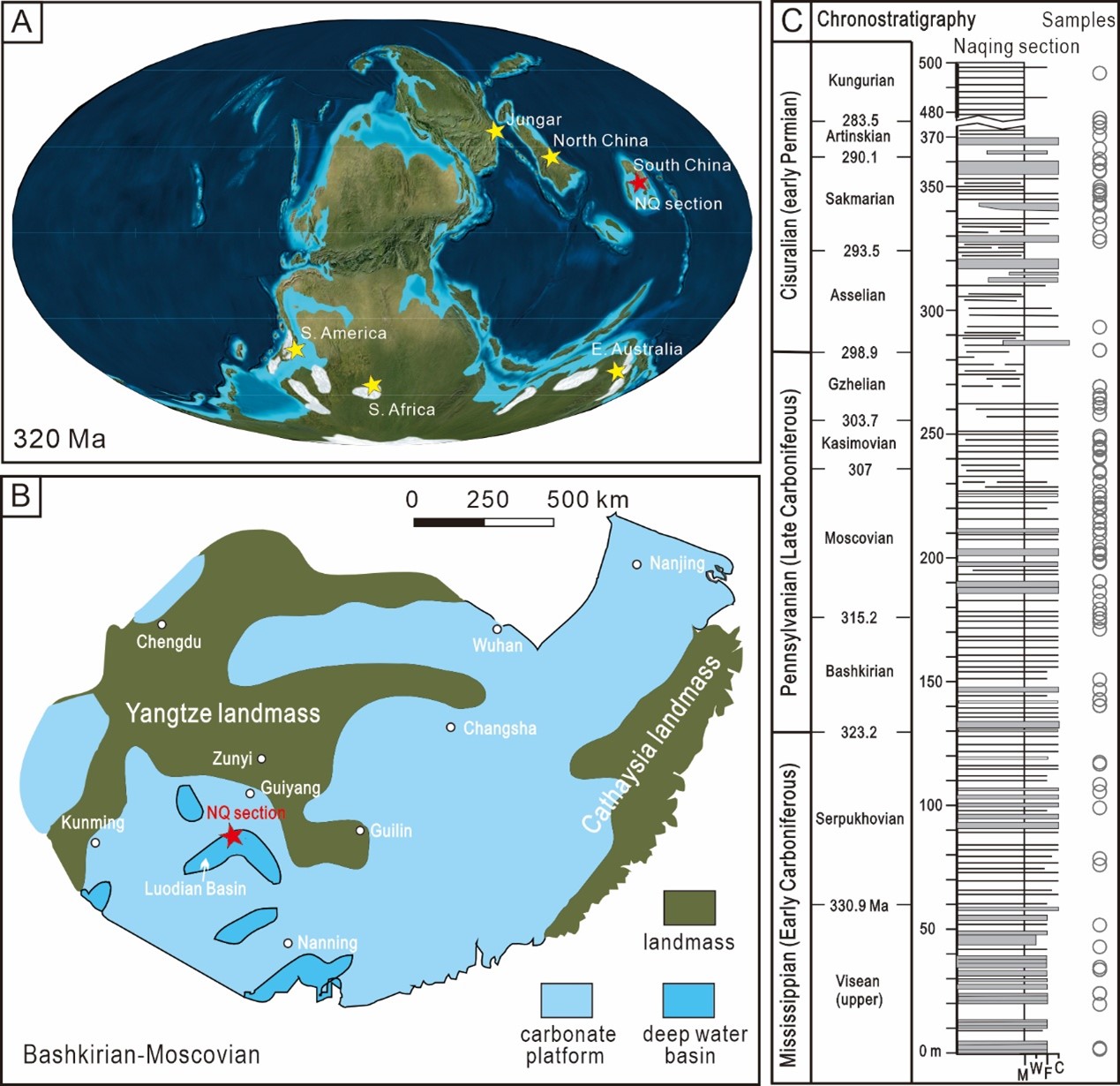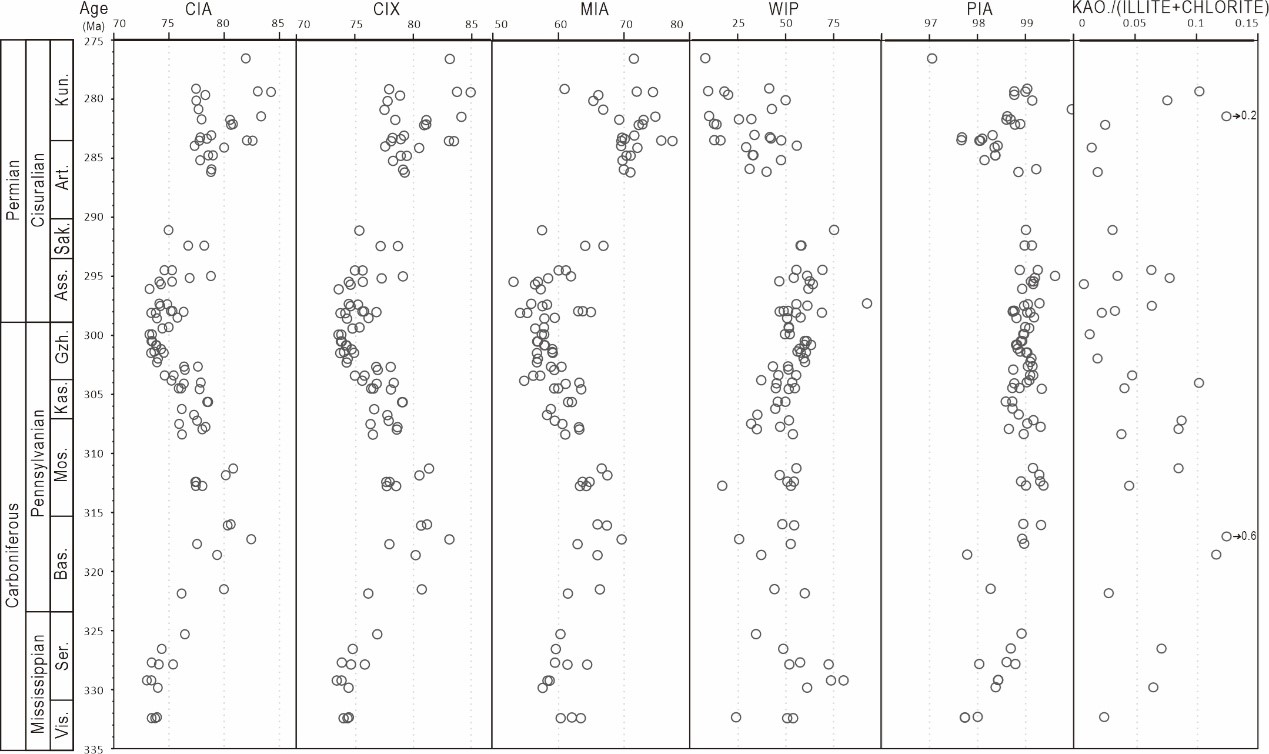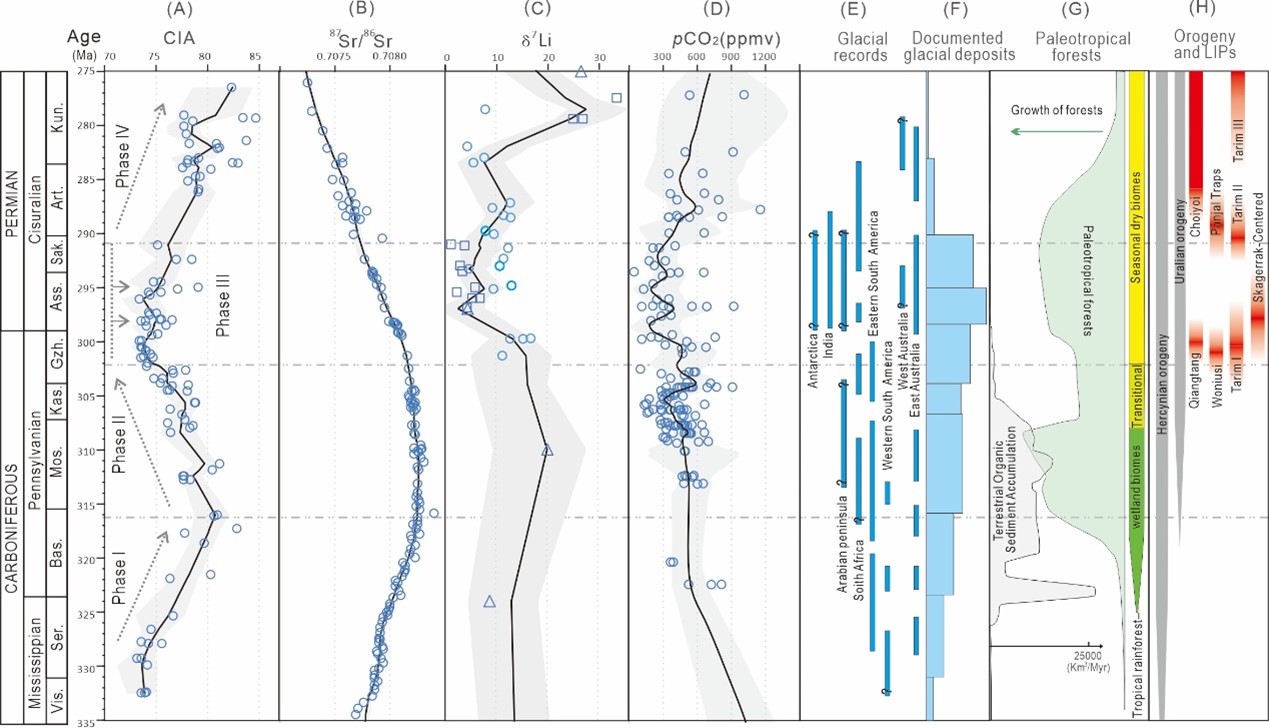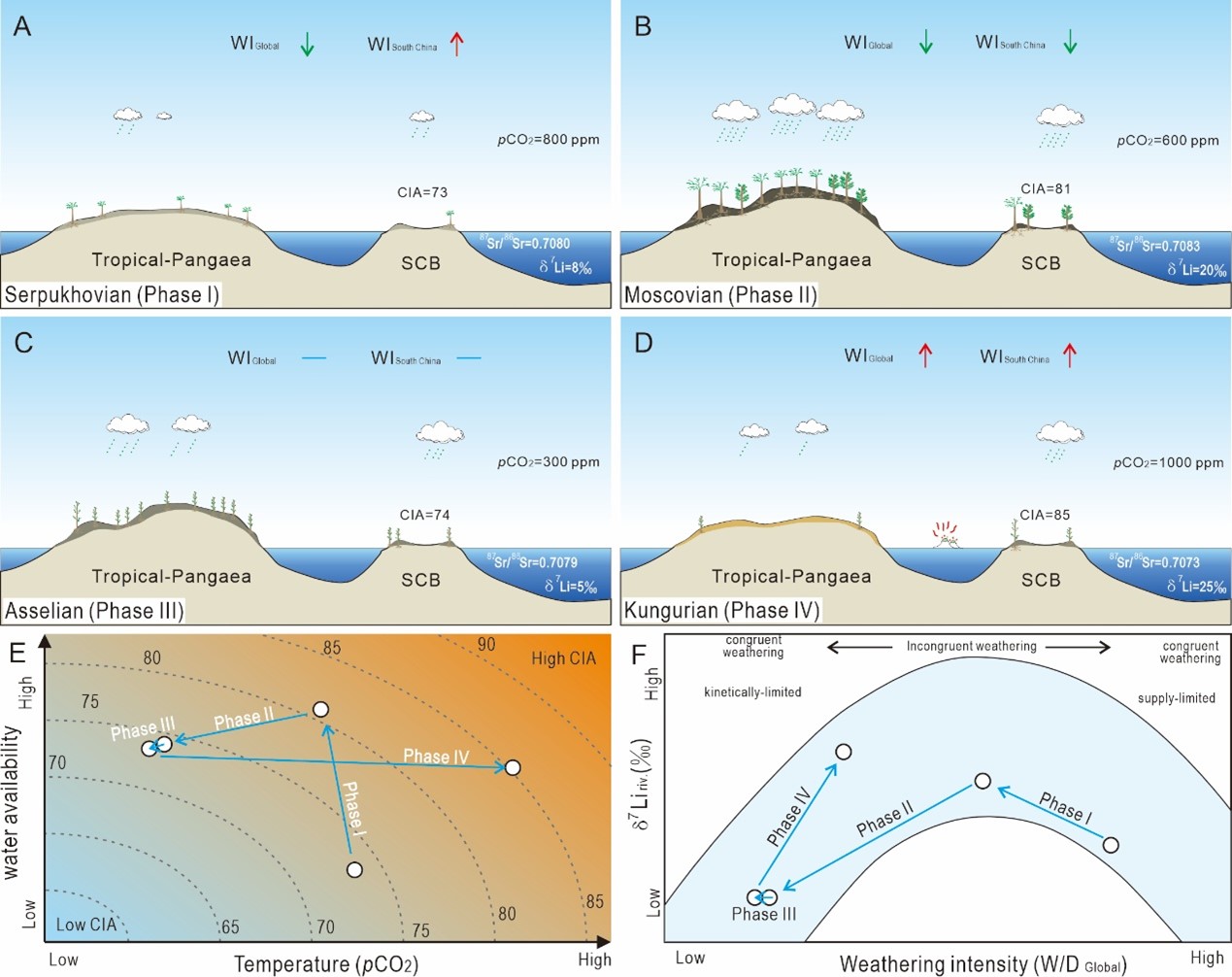The paleoclimate on Earth has rarely deviated beyond the bounds of hospitability for life throughout most of geological history, because continental silicate weathering functions as a thermostat over the geological timescale. Here, Prof. CHEN Jitao from the Nanjing Institute of Geology and Palaeontology, Chinese Academy of Sciences (NIGPAS), leading a team including assistant researchers GAO Biao and XU Guozhen, and Ph.D. candidate YANG Wenli, presented a 60-Myr-long CIA record from a continuously deposited Carboniferous to Early Permian slope succession in South China, to investigate regional chemical weathering intensity based on geochemical and clay mineral compositions. The related findings were recently published in Geophysical Research Letters.
As an important process during Earth system evolution, silicate weathering can change compositions of atmosphere by consuming greenhouse gases, and supply terrestrial nutrient material into the seawater column, which alters the seawater chemical composition and stimulates the marine primary productivity. Therefore, silicate weathering has been widely studied in geological events throughout the Earth history aiming at exploring the critical role it played during perturbations of balanced Earth system states.
The late Paleozoic Ice Age (LPIA) was the longest and most severe icehouse climate during the Phanerozoic. Numerous studies have acknowledged that both the Hercynian orogeny in low-latitude regions and the evolutionary innovation of the terrestrial plant systems played critical roles in driving the onset of the LPIA by reducing atmospheric pCO2 via amplified continental silicate weathering fluxes. Elucidating how these two drivers exert their influences on continent silicate weathering is crucial for understanding the dynamics of paleoclimate during the LPIA. However, it is difficult to distinguish their relative contribution from the global weathering proxies, because both assumed drivers could have promoted silicate weathering flux.
Theoretically, under relatively stable background conditions, the Hercynian orogeny would likely have decreased the globally averaged weathering intensity (WI) through rapid enhancement of average denudation rates, which is particularly plausible during climatic nadirs such as the LPIA when accelerated physical erosion likely outpaced chemical weathering processes. Conversely, well-developed terrestrial plant systems, such as extensive rainforest system, would increase weathering intensity by improving chemical weathering rate and restraining denudation rate due to shield effect. The contrasting impacts on weathering intensity from these two drivers provide an opportunity to gain more insights into their relative contributions. Therefore, a long-term record of regional weathering intensity mainly controlled by paleoclimate and plant evolution during the late Paleozoic may provide a unique opportunity to examine the relative influences of these two major driving forces, particularly when compared to global-scale weathering records.
Situated near the paleo-equator as an isolated block, South China remained tectonically stable throughout the LPIA. Its minimal influence from the Hercynian orogenic uplift and subdued effects from glacial-interglacial variability renders South China an ideal study region to investigate into the relative influences of terrestrial plant evolution and paleoclimate on weathering dynamics, particularly when integrated with previously published seawater Sr and Li isotope datasets.
We found that the CIA record from South China exhibits a four-phase evolutionary trend in regional continental weathering intensity. A strong correlation between WISouth China and atmospheric pCO2 suggests that the former was likely primarily controlled by the pCO2-related paleoclimate changes during 316–275 Ma. In contrast, the increasing WISouth China in Phase I (333–316 Ma) was primarily driven by the rapid growth of paleotropical forests and likely accompanied by an increase in precipitation, rather than by atmospheric pCO2 variations as shown in Phase II–IV.
Integrated with previously published 87Sr/86Sr and δ7Li records, a four-stage evolution path of global continental weathering during late Paleozoic has been established. In Phase I, the inferred opposing trend between WIGlobal and WISouth China suggests that the Hercynian orogenic uplift probably played the dominant role in increasing continent silicate weathering fluxes, while the radiation of tropical forests also exerted a significant contribution to this enhancement. The parallel trend of WIGlobal and WISouth China during phases II–III reflects a coupled relationship mediated through pCO2 dynamics. Intensified silicate weathering fluxes from Phase I lowered the pCO2, leading to global climatic cooling. During Phase IV, the collapse of the Hercynian orogen is believed to have reduced denudation rates in the paleo-tropics, thereby lowering CO2 consumption efficiency through diminished silicate weathering.
This study was supported by the National Natural Science Foundation of China and the Fundamental Research Funds for NIGPAS.
Reference: Biao Gao, Guozhen Xu, Wenli Yang, Jitao Chen*. Disentangling Continental Weathering during the Late Paleozoic Ice Age. Geophysical Research Letters, 52, e2025GL117395. https://doi.org/10.1029/2025GL117395.

Global paleogeographic framework of the late Carboniferous and Lithofacies paleogeographic map of South China around the Bashkirian-Moscovian stage

Regional continental weathering proxies of the Naqing section in South China

(A) The CIA record of Carboniferous to Early Permian calcareous shale samples in the Naqing section. (B) Conodont-based 87Sr/86Sr record. (C) δ7Li data. (D) Estimates of atmospheric pCO2. (E) Glacial records of various Gondwana continents. (F) Estimated continent icesheet volume evolution trend during the LPIA. (G) Growth of paleo-tropical rainforest and temporal distribution of tropical biomes. (H) Major orogenic events and magmatic events.

Evolution of continental weathering intensity
Download:
